Avocados, bananas and tomatoes are climacteric fruits — a certain point of maturation triggers a cascade of botanical signaling and chemical changes resulting in rapid ripening, after which time they’re susceptible to equally rapid rotting. As many a meme has noted, that means they go from green to gangrenous in the blink of an eye, and the internet is littered with tricks and gadgets to speed up and slow down this complex process.
Now there's a Facebook post making the rounds with a veritable holy grail of kitchen hacks: How to keep a whole bag of avocados at peak ripeness for weeks, so you can guac ‘n’ roll at your leisure. Imagine it: days of perfect slices for your burrito bowl meal prep! Gorgeous green cubes for your smoothie bowl any time you want! Finally, you can be the master of your avocado consumption, and not the other way around.
Or can you?
We bought a whole bag to try out.
This tantalizing method entails submerging ripe avocados in water and refrigerating for storage. Some reports from those who have tried it say it works for up to two weeks, and others note they’ve pulled an apparently perfect avocado out of its beauty sleep after an incredible four weeks.
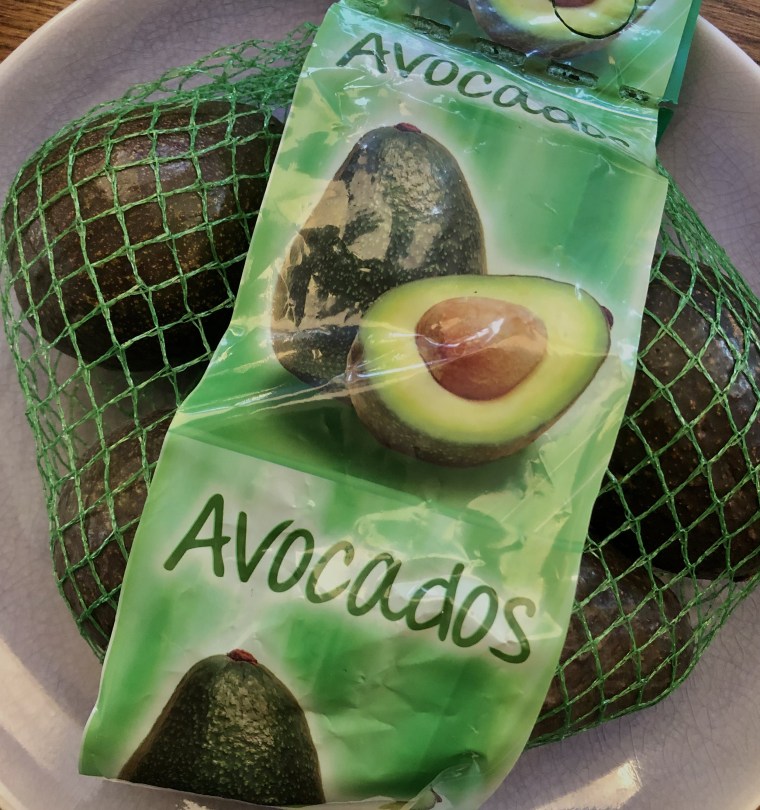
It sure sounds like the Prince Charming of kitchen tips, but so many "hacks" turn out to be just a fairy tale. Does it really work? We tried it, and here’s the result:
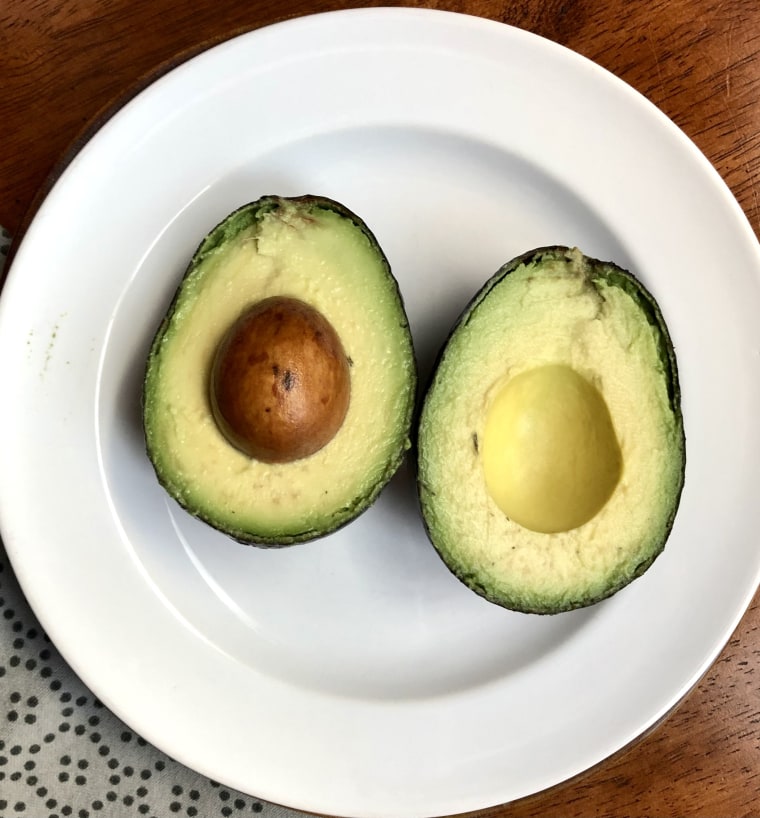
Not bad, right? For comparison, although it was painful to let one go, I sacrificed one of my bumpy green treasures for the sake of science. Here’s one from the same bag, stored for the same amount of time on the kitchen counter:
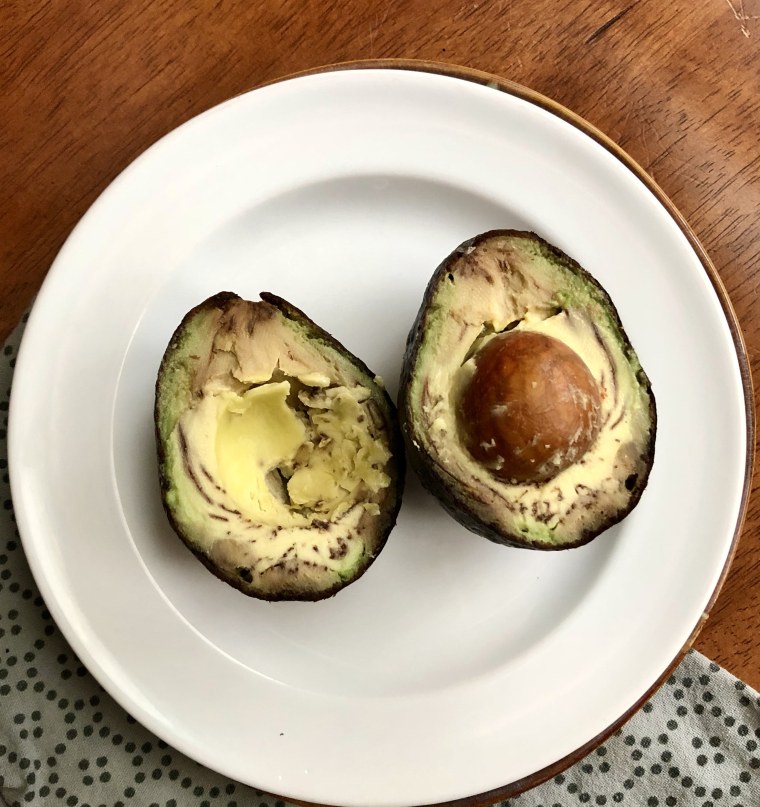
But … is this hack safe?
The one from cold water storage certainly looks far more lovely than its room-temperature stepsister, but taste is just as important. Is this the magic method to have a creamy, luscious avo on demand? Well, I have no idea. I never tasted it, because when contacted for safety information about this method of avocado storage, an FDA spokesperson told us, "The FDA does not recommend this practice. The main concern is with the possibility that any residual human pathogens (i.e. Listeria monocytogenes, Salmonella spp., etc.) that may be residing on the avocado surface (FDA Microbiological Surveillance Sampling for Whole Fresh Avocados), may potentially multiply during the storage when submerged in water."
Listeria is an especially bad kind of food poisoning to get. If you’ve ever heated lunchmeat to steaming during pregnancy, that’s the one you were trying to avoid, and with good reason — it grows at refrigerated temperatures and can cause miscarriage or stillbirth. And like salmonella, it can cause severe illness especially in the older, very young, or immunocompromised. And though you may have seen advice to disinfect the skins or rinds of certain fruits before preparation to guard against listeria, that won’t be effective here, because as the FDA elaborated, "In addition, research performed by FDA scientists has shown that Listeria monocytogenes has the potential to infiltrate and internalize into the pulp of avocados when submerged in refrigerated dump tanks within 15 days during refrigerated storage. In this case, even surface disinfecting the avocado skin prior to slicing would not be able to remove the contamination."
Yikes! And I can tell for sure that water did seep into our water-stored avocado even though the stem was intact, because when I began to cut into it, liquid avocado squirted out of the top like toothpaste from a tube.
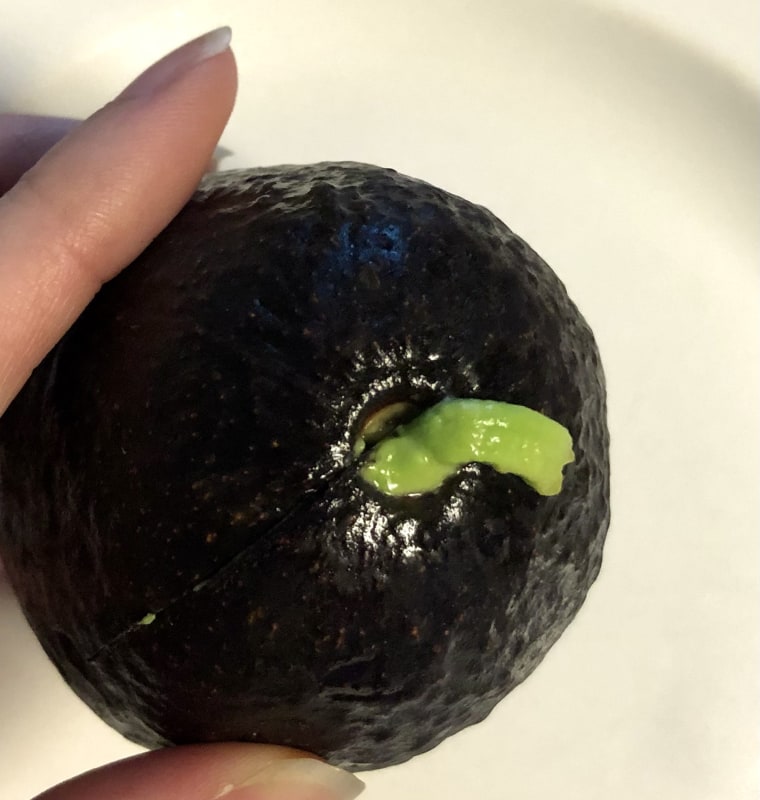
Since this method is out, what else can you do to prolong the edible window of your precious tree-borne gems? There are a couple of other food-safe avenues to explore.
Refrigerating avocado
Although it won’t keep them at the perfect ripeness for more than a few additional days, you can refrigerate them dry when they’re ripe. Here’s avocado No. 3, stored for the same amount of time as the others, but dry on the fridge shelf.
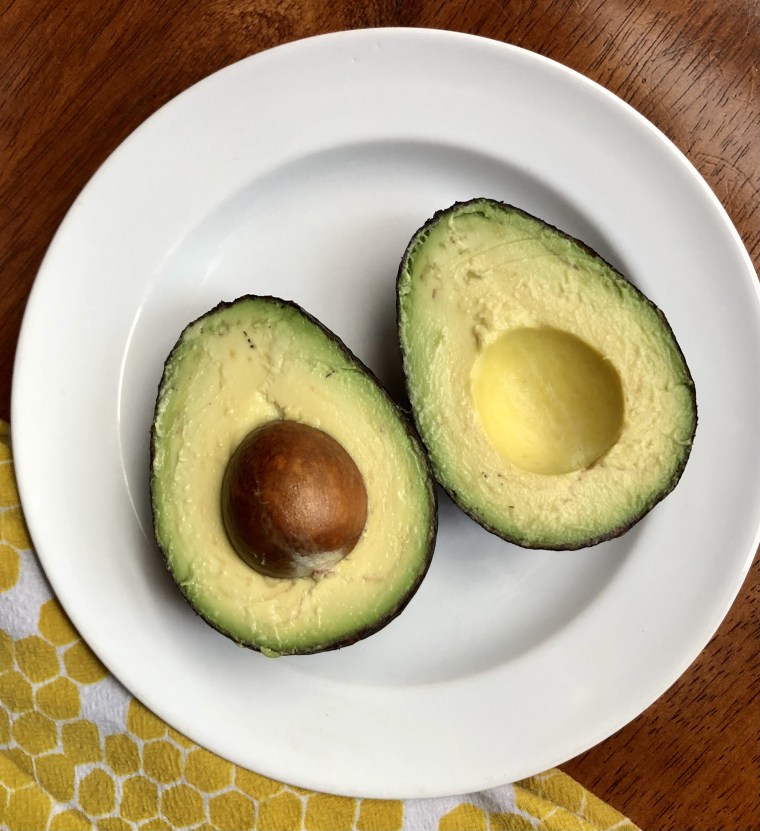
Not only do they stay green for days, but they also slice beautifully. Enjoy feasting your eyes, because as of this writing, I have already eaten it with my mouth.

Baking avocado
You can also push the ripening envelope by baking a not-quite-ripe specimen for a few minutes. A lot of write-ups about that one suggest wrapping in foil before heating at 200 F for 10 minutes, but every time I’ve tried it, it has taken longer than that. I typically give it about 15 minutes at 225 F.
Remember, though, that ripening of avocados has a lot of moving parts. Most of the descriptions say this works by prompting the avocado to release ethylene gas, the chemical that ripens climacteric fruits, but those chemical reactions don’t really have time to occur in just a few minutes. Instead, baking the avocado liquifies some of its fats, denatures a few proteins and maybe softens up the fibers, but it doesn’t really cause the climacteric cascade that results in true ripening and the best possible mature flavor. The outer surface of the avocado will be a little too soft, and the inner part nearest the pit will probably be a bit too firm, but it will work well enough in a pinch. This method is perfect if, like me, you love extra-chunky guacamole.
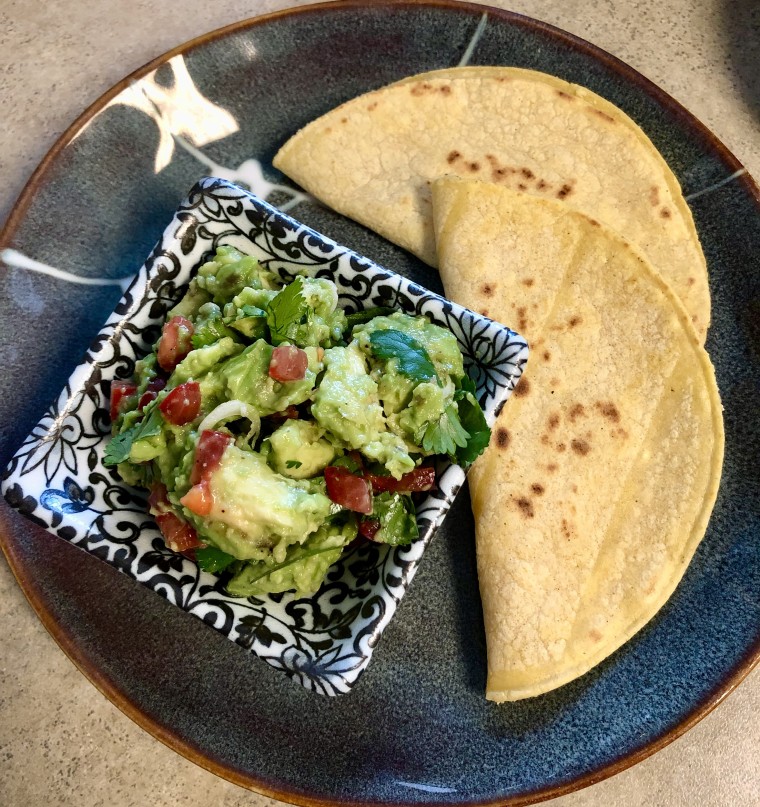
Freezing avocado
What if you buy a bag and they ripen all at once? All is not lost. You can either have guacamole for breakfast three days in a row, or you can freeze some of them! If you slice them up, sprinkle with lemon or lime juice and squeeze as much air as possible out of the freezer bag, it will slow down the action of polyphenol oxidase, the enzyme that causes darkening in most cut fruits. It won’t stop it entirely though, so you will still see darkening over the coming days and weeks. For longer, bright green storage, try freezing them whole and unpeeled. You can then thaw them as needed by leaving them at room temperature for an hour or so, but I prefer to defrost in the microwave for a couple of minutes.

Be forewarned that if you try to rush it and microwave at full power, you risk re-enacting that scene from "Scanners," and subsequently spending the evening scrubbing a smoking, oily, thoroughly avocado’d appliance.
The drawback to freezing is that it will change the texture pretty significantly. When thawed, it will be very soft, similar to thoroughly mashed avocado even before you take a fork to it. It just won’t work for artful slicing, but it’s perfectly fine if you prefer smooth guacamole or if you plan to use it in a smoothie.
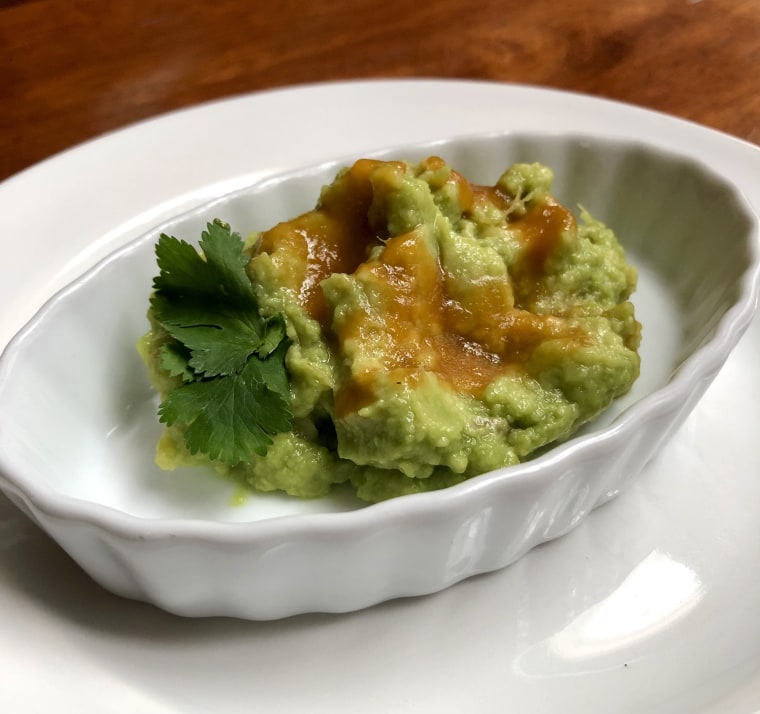
Another thing to consider when freezing avocados whole is knife skills. Under no circumstances should you attempt to peel or cut a frozen avocado. People often injure themselves slicing avocados even when they’re not frozen solid. Consider investing in a cut-resistant glove and avocado knife regardless of how you are storing them.
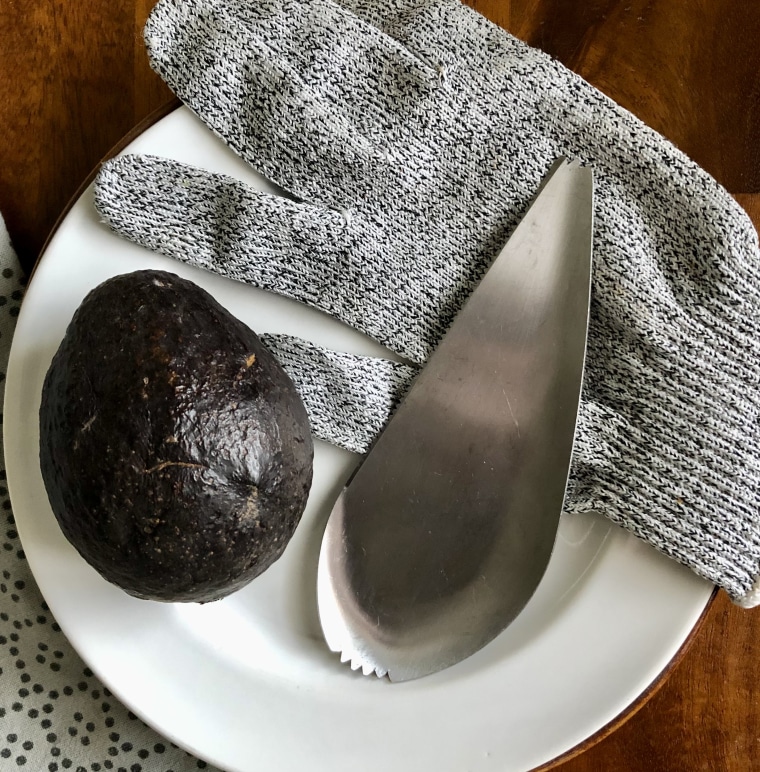
Preventing cut avocado from browning
One last tip for getting an extra day out of a leftover half: Leave the pit in place and squeeze a few drops of lemon or lime juice on the surface. Then, cover it with plastic wrap, taking extra care to press the wrap against the cut surface as much as possible. This half was stored that way in the fridge, and after 24 hours, it’s still looking like a golden egg.
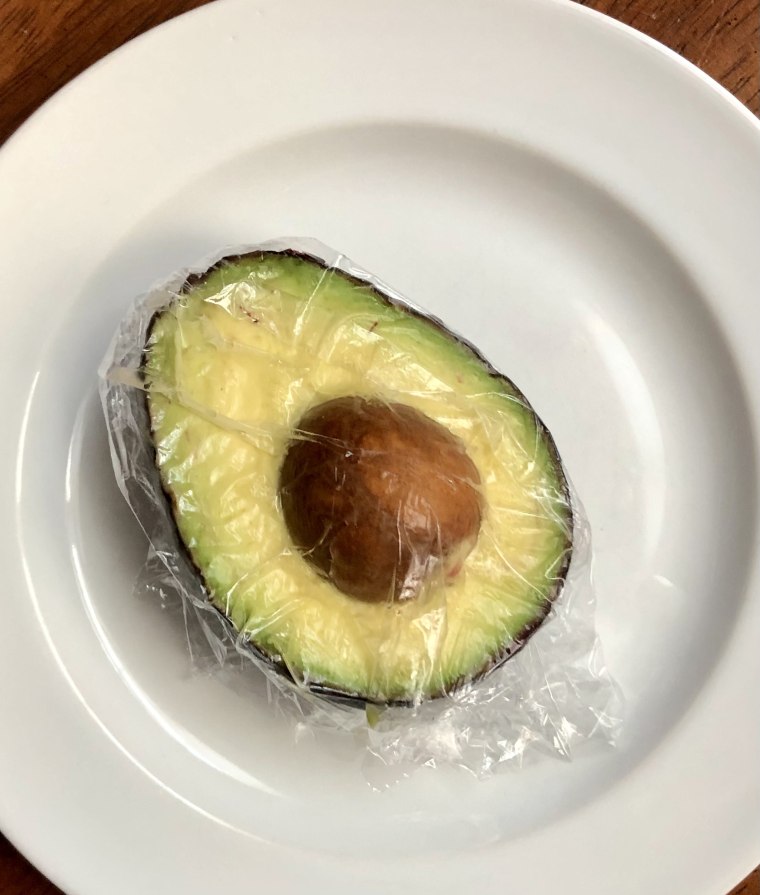
Our verdict? The risk of serious food poisoning is just not worth it. It’s best to buy what you’ll use within a few days, maybe extending the honeymoon by early baking and late dry cold storage, or to freeze if you buy in bulk. As beautiful as it looks, the potential for microbial contamination is more than skin deep, and water storage may be a recipe for disaster.